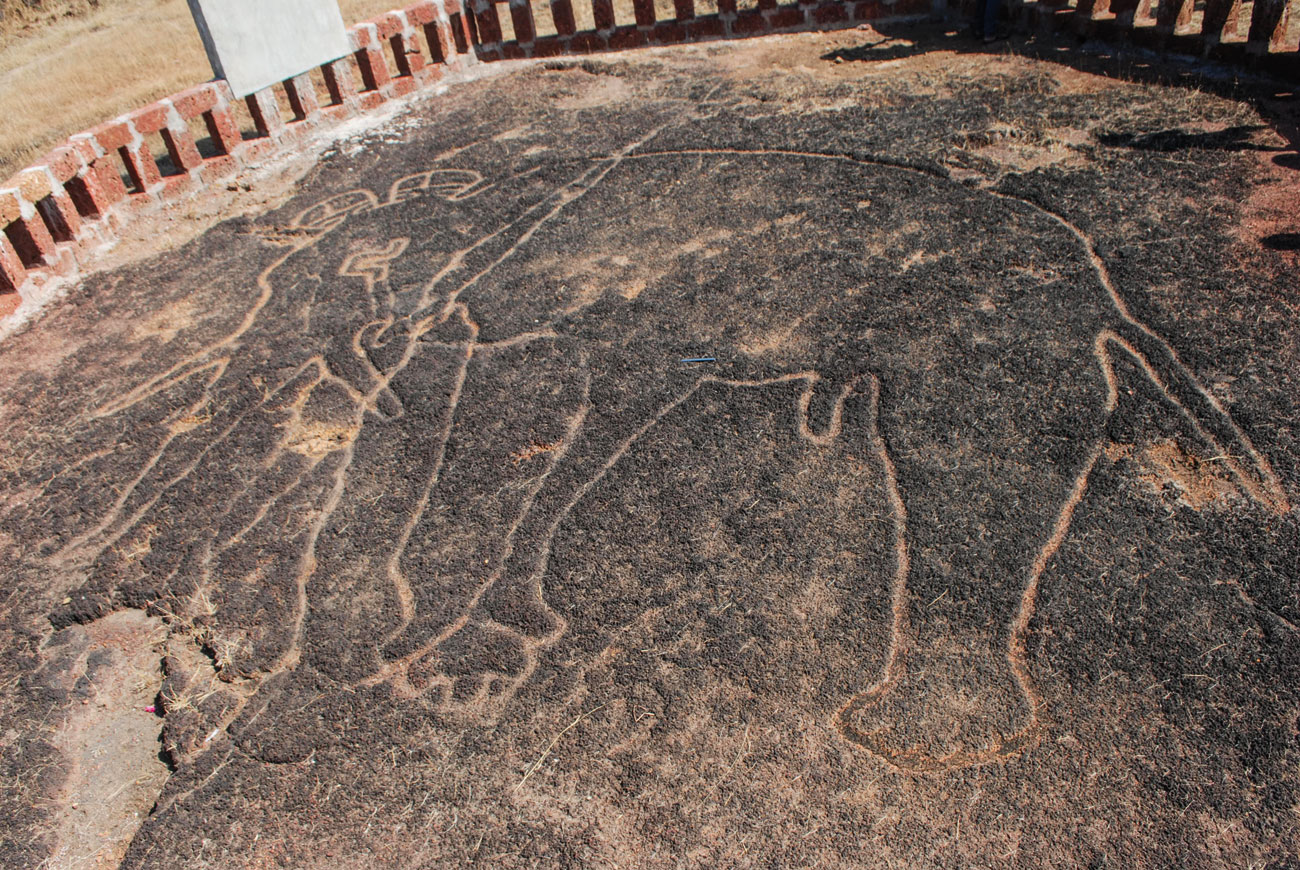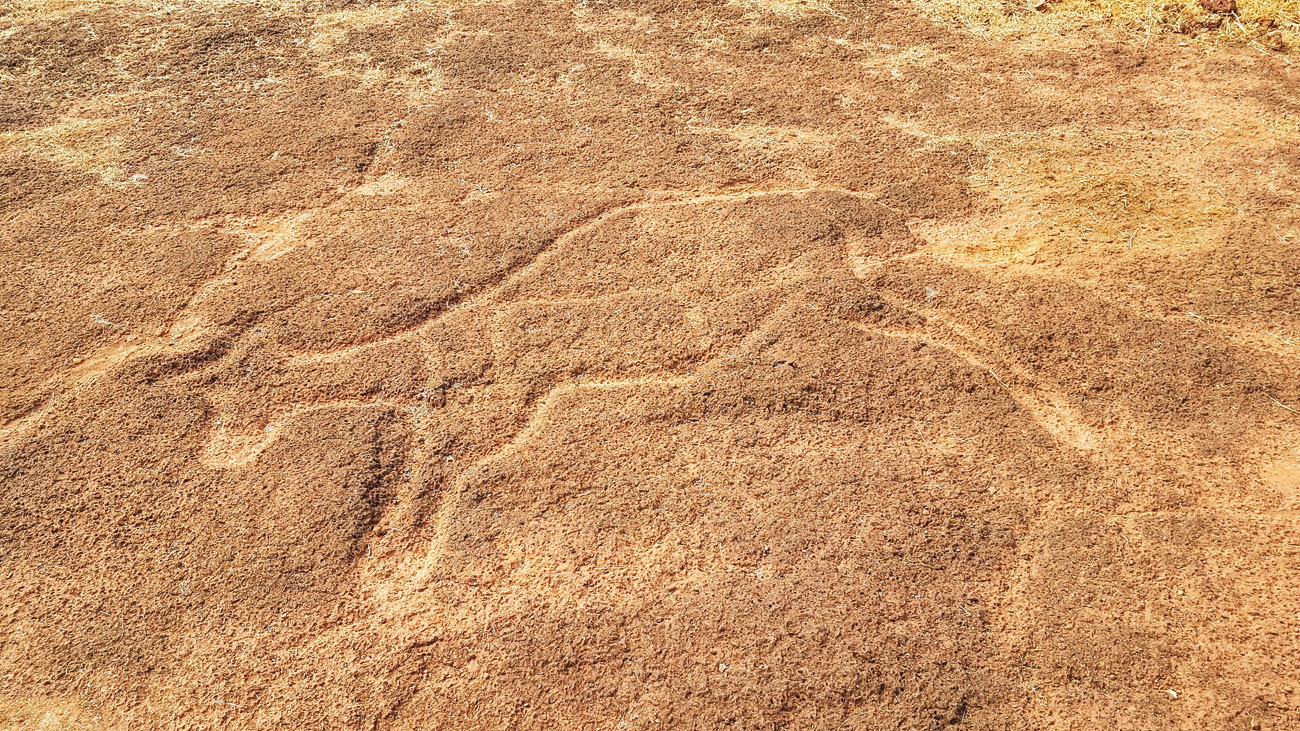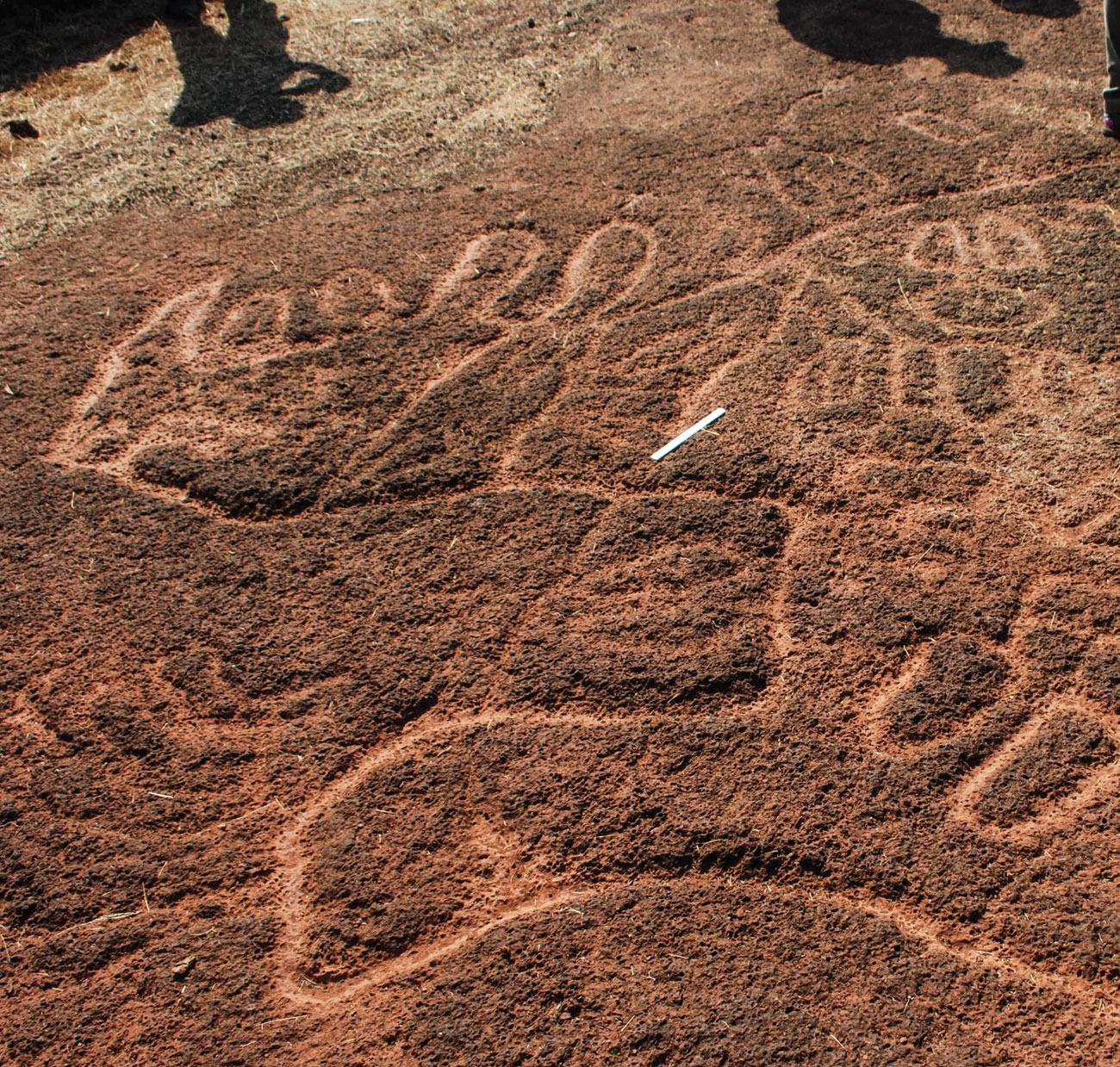The Konkan Rocks
First published in Sanctuary Asia,
Vol. 44
No. 2,
February 2024
By Aparna Watve and Hema Ramani
Under the midnight sky, darkness engulfed the young researchers monitoring night fauna on a sada – a rocky plateau – near Ratnagiri, along India’s western coast in the state of Maharashtra. Their excited hoots sounded loud and clear, not unlike ancient humans who once hunted on the plateau. Incredibly, the sada beneath our feet, just like the star-studded sky above, has remained mostly unaltered, while humans and life have steadily changed over hundreds of years.
Local elders in this region talk of immense hardships borne by their forefathers, who created paddy fields and orchards along the sadas. Their stories go as far back as 13 generations – about 400 years, but humans have lived on these sadas several centuries before that. They climbed the same paths to the sada that we did. They drank from the same waterhole where we ate our packed lunch. “The Pandavas (the five brothers from the epic Mahabharata) dug this waterhole, that is why it never dries,” said one of the village elders. As a scientist, I quickly decoded the geography hidden in this statement – the water retention capacity is a result of the sponge-like structure of the lateritic rock, which holds rainwater in its cavities. What amazed me was that before such studies of rocks existed, ancient people were able to use their knowledge of the landscape and rainwater drainage to identify and dig at the exact spot where subterranean water could seep in all seasons.

A carving of a male elephant on the Ukshi Sada in Konkan. The ears, tusks and other parts of the elephant are astoundingly proportionate, considering the large scale and tough material. Photo: Dr. Aparna Watve.
Around the Ratnagiri sadas, pre-historic stone tools and caves – large enough to fit human groups – have been found. The most remarkable among these finds are the carvings found on the surface of sadas, called geoglyphs. Shepherds refer to them as Pandav chitra (art made by the Pandavs). More than 1,000 of these geoglyphs been found on sadas around 50 villages. The species engraved in geoglyphs are recognisable, but the abstract patterns defy meaning. Since these carvings are a prominent archaeological discovery, some sites are a part of the tentative list for a UNESCO cultural heritage tag.
Art In Rocky Plateaus
As ecologists, it was thrilling to see graphic depiction of Indian fauna – an open book of natural history – carved on the rocks! Unknown artists have captured the essence of animal form so well that the species are easily identifiable even with simple outlines. One is reminded of artworks that glorified the simple yet powerful line. The wild pig with its snout, the langur with its curved tail, and gaur with prominent horns are beautifully formed. Peacocks, hare and monitor lizards are carved at many sites. One site even has a hyena, with its hackles raised, and a snake that could be a python or a Russell’s viper with prominent reticulations. Invertebrates such as crabs, scorpions and beetles are also seen among the geoglyphs. We spotted many living specimens of these animals on the sadas during our research, too. For instance, monitor lizards were often seen basking on gadga – a fence made by piling lateritic stones, and scorpions were common under loose boulders.
None of the depictions have domesticated animals such as bulls or horses. Plenty of aquatic and marine fauna, such as sharks and other fishes, stingray-like figures and a jellyfish have also been depicted in the geoglyphs. These sites are not too far from the estuary and sea beach, which were ideal hunting grounds for ancient hunter-gatherers. Even today, at low tide, fisherwomen walk along the muddy banks picking mulye – clams. During the monsoon, when deep-sea fishing is halted, they can still find a basket-full of fish from the estuary in just an hour.
Life-size figures of a tiger and an elephant, one male and two females, have been discovered on distant plateaus. Tigers from the Western Ghats and elephants from Karnataka most likely made regular forays into southern Konkan during ancient times. The elephant at Kasheli is remarkable, with carvings of many animals and birds within its belly, and two young elephants around it . Aerial views have revealed an artistic flow and balance of the entire composition. How could the artist get this view while working on the ground? The only possibility is a well-planned exercise by a large group of people.

The Deood Sada has a carving of a deer. In the carvings on the Ratnagiri plateaus, humans are neither chasing the animals nor riding them, indicating a unified world, intact in an undisturbed landscape. Photo: Sanjay Thakur.
The real surprise is the life-size figure of the rhinoceros, clearly depicting a horn and body ornamentation. The artists may have come from lands where rhinos were common, or visited those locations during a migration. The west coast of India was on the trade route to distant lands for many centuries. Determining the correct species of carved rhinoceros could help us understand more about the artists and their origins. In Shifting Grounds: People, Animals and Mobility in India’s Environmental History, edited by Mahesh Rangarajan, Shibani Bose writes that rhinoceros bones have been found as far south as Tamil Nadu, indicating a vast historical range of the species, which may possibly have been encountered by the artists who made these images.
Among the different geoglyph sites, a fully carved composite figure near Adivare village is extremely special as it includes a huge turtle that reminds one of the leatherback turtle, a whale-like fish, and a tiger-like animal – all linked by simple flowing lines in a complex artistic composition.
Animal figure clusters on different plateaus could be from different time periods, and archaeological research may construct a chronology of the carvings. Currently, the only distinction that can be made is between animals drawn as outlines alone, and those with fully-carved bodies.
Living rocky outcrops
Sadas in the northern Western Ghats and Konkan region are specialised habitats belonging to the general habitat category of rock outcrops. These plateaus have many special features of floral and faunal communities, owing to microclimatic conditions such as high exposure to sun, shallow soils, water stress or excess, which are all caused as the large rock surfaces remain exposed to the elements. Worryingly, the Wastelands Atlas of India, compiled by the National Remote Sensing Centre and Ministry of Rural Development (2010), shows extensive ‘Category 22’ (barren rocky/stony waste areas) in Kolhapur, Pune, Satara, Ratnagiri and Sindhudurg districts. The authors’ studies have shown that far from being barren, rocky plateaus are a living entity.
Of Co-Existence And Integration
Animals have been depicted in paintings and sculptures in India, but they have always been part of a humanised world. Even the ‘Zoo Rock’ from the Palaeolithic Bhimbetka caves has an armed human among the animals. Pet monkeys are seen in temple sculptures. Animals as symbols of deities or their vahanas (vehicles) tell a tale of the natural world subjugated by humans.
But on the Ratnagiri plateaus, humans are neither chasing the animals nor riding them. Like the animals, the human figures are simple outlines or just a pair of legs or foot prints. They merge with the animal figures, indicating a unified world, intact in an undisturbed landscape.
The value of the seamless merging of nature and humans continues to date, in the contemporary culture of Konkan. Our research has documented a culture integrated with nature, local shrines within sacred forests, and the sanctity of sacred perennial springs and streams protected by faith. Giant trees and large boulders are considered as abodes of various spirits, and are revered during local festivals and placated through rituals for the well-being of the community. Coexistence with nature is the basis of life even today, and not a distant memory.

The life-sized rhinoceros carved on Deood Sada clearly depicts a horn and body ornamentation. The artists may have come from lands where rhinos were common, or visited those locations during a migration. A six-inch ruler is placed next to it for size comparison. Photo: Sanjay Thakur.
The Ratnagiri and Sindhudurg sadas continue to have rich biodiversity despite being privately owned, and despite the presence of agriculture, agroforestry and homesteads. The young researchers have documented 50 amphibians and reptiles, 127 birds and 450 plants on the sadas including eight endangered species.
Konkan today is at a crossroads, where landscape and lifestyles developed over many centuries, are challenged by aggressive “modern development”, which is possible only at the cost of land, water, biodiversity and local culture.
Any conservation model for this region must necessarily include both nature and culture. A two-year project from The Habitat Trust is supporting us in uncovering interesting features of the lesser-known sada habitat. Our aim is to document biocultural values that emphasise intangible values of reverence for the landscapes, which communities in the Konkan have held since time immemorial, and to prepare conservation management plans for posterity, in the hope that future generations too will be able to gaze up at the starry night sky while marvelling at the enduring ancient and gorgeous geoglyphs.
Aparna Watve and Hema Ramani An ecologist with an interest in rocky outcrops, Aparna has been studying Maharashtra’s lateritic plateaus since 2001. Hema has a Master’s in Law and has been working in environmental conservation since 2006. Both are part of the Bombay Environmental Action Group.




